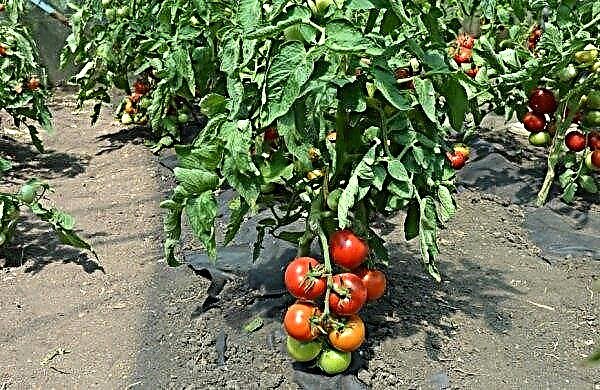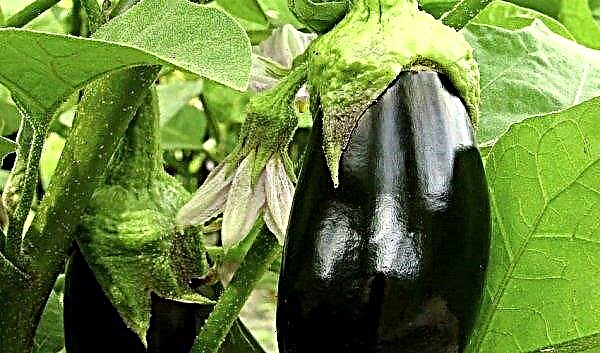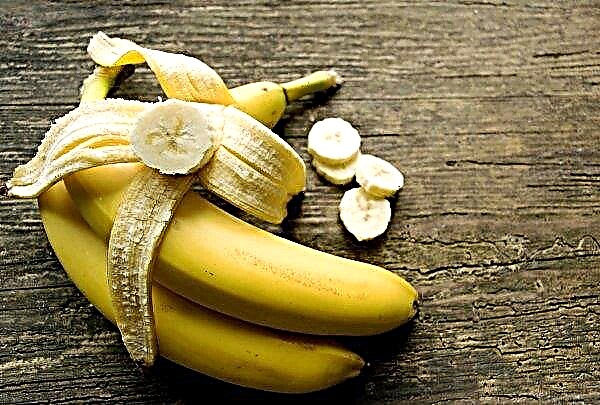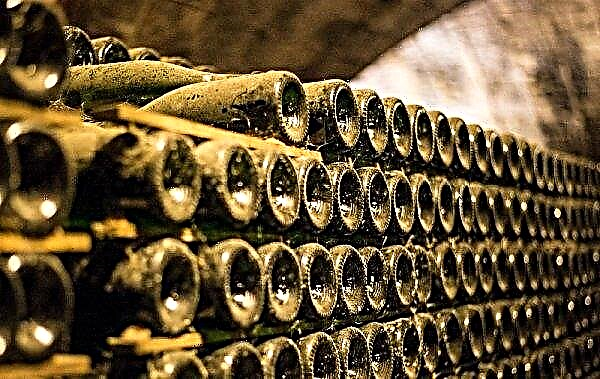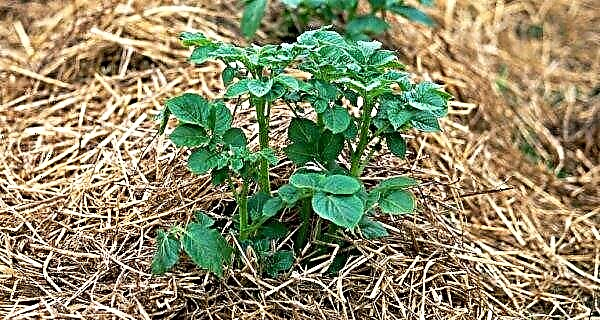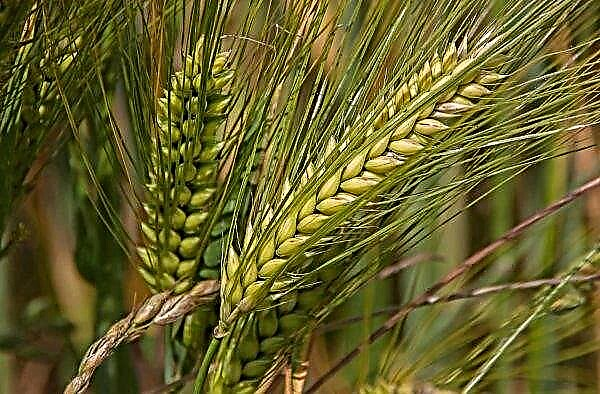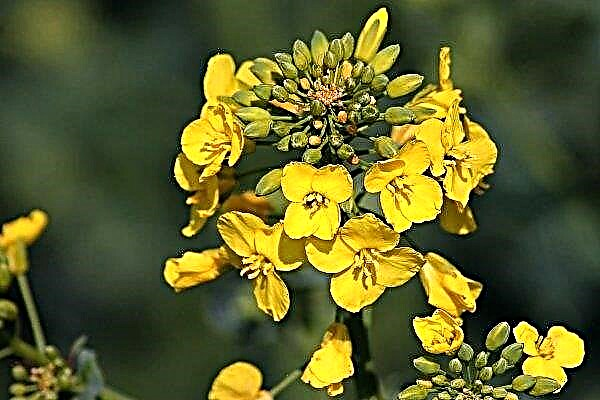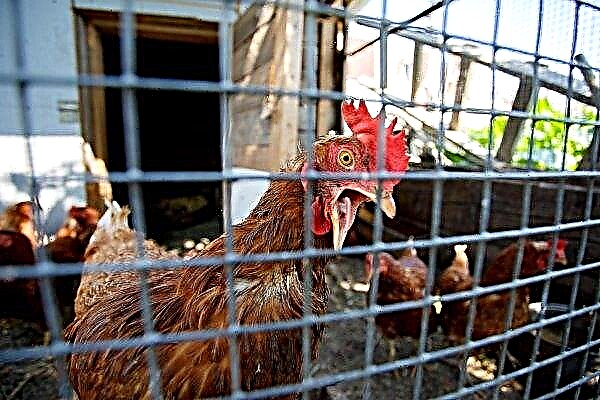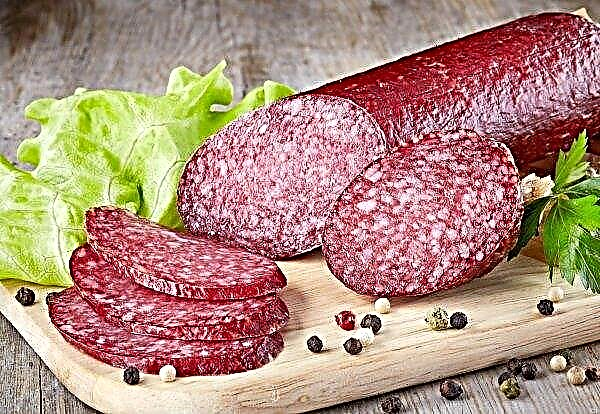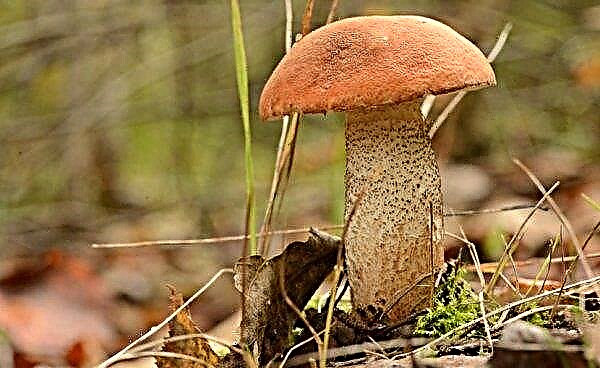Onion-batun is one of the plants that is firmly entrenched in the daily diet, which is why most lovers of greens, along with dill and parsley, allocate a lot of space for the culture. Despite its unpretentiousness, in order to get a high crop yield, it will take a lot of time to plant. This article will discuss the main subtleties of growing onion-batun, and also describe in detail how to properly care for it.
Botanical description of the plant
Batun is a perennial herb from the Onion family. This is a dense and branched bush of a grassy type, its base is a basal rosette-stem, from which numerous shoots diverge. The plant has been grown in monoculture for several years, while the highest productivity is achieved on the 2nd – 3rd year of cultivation. Presumably, the species first appeared in Asia, but today it can be found in the wild in China, Japan, as well as in Siberia and the Volga region. In cultural conditions, the plant is found everywhere both in open soil and in greenhouses. The stem of plants is shortened. The leaves are hollow, of a saturated green hue, fistular type, hollow, they do not contain moisture.
Presumably, the species first appeared in Asia, but today it can be found in the wild in China, Japan, as well as in Siberia and the Volga region. In cultural conditions, the plant is found everywhere both in open soil and in greenhouses. The stem of plants is shortened. The leaves are hollow, of a saturated green hue, fistular type, hollow, they do not contain moisture.
The length of the aerial part of the plant can reach 1 m, but often it does not exceed 30-50 cm. The root system of the plant is branched, fibrous type. Unlike onions, the root system does not tend to form an onion, so only green mass is used for food. The plant blooms abundantly, by the middle of the growing season, a characteristic spherical multi-flowered umbrella develops on it.
Did you know? The onion-batun was brought into the territory of Russia by the Mongol-Tatar conquerors, which is why to this day the people are often called culture "Tatar".
Pedicels are thin, bell-shaped perianth, with oblong, pointed leaves, yellow. The perianth is approximately 2–3 times shorter than the peduncle. Stamens whole, significantly longer than the perianth. After flowering, numerous seeds of a dark brown or black color ripen from the inflorescences, rounded at the base and pointed at the end.
The best varieties of onion-batun
Today, plant growers know many types of onion, but the following varieties are especially popular:
- April - Superearly variety of onions, one of the first plants that appears in the spring after snow melt. April is characterized by a high content of vitamins A, B and C, as well as winter hardiness. Greens can successfully withstand spring frosts to –10 ° C;

- Baron - an early ripe, high-yielding plant. The first crop can be harvested already 30–35 days after the appearance of the first seedlings. Productivity is high, the highest rate is observed in the 2nd year after sowing. The leaves are characterized by a special delicate aftertaste with a pleasant speck, as well as a pale wax coating. Plant height is within 70 cm;

- Bahia Verde - mid-season variety with a miniature bush up to 30 cm long. The leaves have a characteristic green color, as well as a slight pale coating. The variety is a hybrid between the onion and the onion, has a characteristic onion flavor and aroma. Bushes give fresh leaves throughout the entire period of active vegetation, until the middle of spring;

- Sunrise - It is especially popular among gardeners from the northern climatic regions, since this onion under the snow is able to withstand frosts down to –45 ° С. Bushes are tiny, up to 25-30 cm tall. Hybrid productivity is average, but has been stable for several years;

- Gribovsky 21 - a short branchy plant with a height of about 25 cm. The stem is branched, with a huge number of leaves. The hybrid has a high yield, which reaches up to 20 kg / m². The foliage is characterized by a special sweetish aftertaste and an elegant speck;

- Giant - mid-season winter-hardy growth. The leaves are characterized by a pale wax coating and a special shape, they are wide and persistent. The variety has a special mild flavor, so it is most often used as an addition to seasonal salads;

- Tenderness - one of the most precocious plants of the family, gives the first full-fledged crops a month after germination. The branching of the bush is average, while the height of the aerial part does not exceed 40 cm. The taste of the leaves is particularly pleasant and gentle, it does not have a sharp sharpness and a heavy aftertaste;

- May - mid-early variety with a characteristic elegant, medium-branched bush. Also, the plant has a fairly high winter hardiness. The main highlight of this onion can be called increased crop keeping quality; after pruning, the leaves do not coarsen for a long time, while maintaining both appearance and nutrition;

- Russian winter - an early ripe variety of onions, its main distinguishing feature is dark yellow foliage, it is characterized by almost not pronounced sharpness. The bush is medium-branched, resistant to frost. The plant forms a small pseudobulb, which can also be used as food;
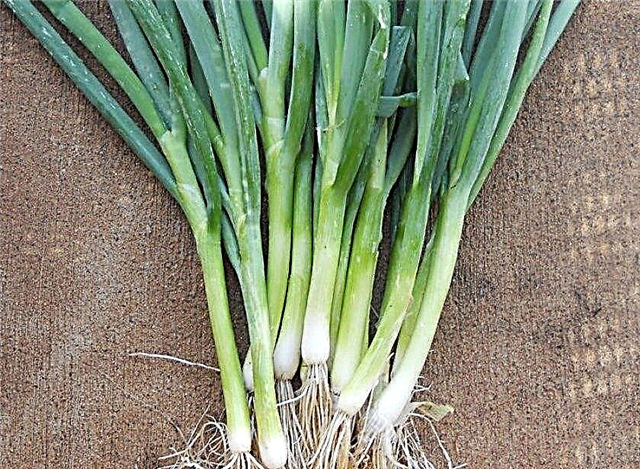
- Salad 35 - early ripe hybrid resistant to frost up to –10 ° С. The bush is large and tall, about 50 cm in height. The taste is characteristic of other representatives of the species. The crop has a good keeping quality, the leaves do not fade and do not roughen after cutting long enough. Unlike related species, Salad 35 has an increased resistance to specific diseases;

- Seryozha - a tall, precocious species up to 50–70 cm in height, the leaves are characterized by a unique green-blue hue. The aerial part is covered with a pale waxy coating. The variety has a fairly spicy and spicy flavor, while the leaves are inherent and pleasant sweetness.

When is the best time to sow onion-batun before winter
In winter, the onions are sown after a steady cooling forms, at which time the soil should freeze to –3 ...– 4 ° С. Depending on the climatic characteristics of the growing region, the best time for sowing begins from early November to the first half of December.
Important! Although the onion-batun is able to grow in the same place up to 10 years, it is recommended to renew the culture after 3–4 years. Otherwise, high crop yields cannot be achieved.
How to choose a place to land
Onion-batun loves fertile soils and a huge amount of light, therefore, in order to achieve a high crop yield, sowing should be carried out on well-fertilized chernozems, loamy or sandy soils. To achieve instant spring seedlings, the area under crops should be located on the south side. Here, the soil warms up most quickly, which accelerates the appearance of the first crop. The ideal zone for beds should be away from tall vegetation or any barriers, while there should be no draft in the planting zone.
How to prepare for landing
Preparatory measures begin a few weeks before the expected date of sowing. The first thing to do is to carefully dig the site and clear the soil of a variety of plant debris. After this, you need to determine the acidity of the soil, for this you should use a special litmus indicator.
The acidified soil is fertilized with shale ash or lime until neutral (pH 6–7), alkaline soils do not need to be equalized. To improve productivity, the place under future beds is well fertilized, complex mineral fertilizers are used for this (ammofoska, urea, ammonium nitrate, etc.). Immediately before sowing, seeds should also be prepared.
Important! Potato, tomato and cabbage will be the best predecessors for a batun. Do not sow the culture after garlic, cucumbers or other representatives of the Onions.
In order to avoid damage to young shoots by fungi, the seed is sterilized. To do this, the seeds are soaked for 20-30 minutes in 2% potassium permanganate or 5-10 minutes in 70% alcohol, then the seeds are well dried at room temperature. After this, the site is again digged well, and you can proceed to sowing the crop.
Sowing and growing technology
Like any other crop, a rich fruiting crop requires special cultivation technology. Without this, crops often become quite rare, and in the case of freezing, they can completely freeze. To avoid this, crops are approached with all due care.
Autumn sowing of seeds
Seeds are sown to a depth of 2-3 cm in a row-like manner, while row spacing should be about 25-30 cm. Rows are placed across the entire territory of the site parallel to its long side. The seeding rate of seeds is about 2 g / m², but in the case of onion cultivation in a cold climate, it is doubled. After sowing, the seeds are carefully wrapped with soil, and the site itself is carefully leveled.
In order to avoid overcooling of seeds and to increase the seed germination capacity, the plot is mulched with humus with a layer of 2-3 cm. After that, if possible, a covering of pine branches should be created over the humus. In this form, the site is left alone until the spring thaw. As soon as the average daily temperature rises to 0 ... + 5 ° C, the flooring is removed.
Did you know? Onion-batun is considered a culture as a record holder for the content of ascorbic acid, daily consumption of only 150 g of greens can fully satisfy the body's daily need for a substance.
Instead, the beds are covered with a transparent plastic film, it creates a local greenhouse effect, which at times stimulates the activity of germination and improves the friendliness of plant sprouts. A week after emergence, the polyethylene is removed.
Growing onions seedlings
To this day, it remains a mystery to many people whether it is possible to sow onion seedlings through seedlings, however, in fact, this technique is no less effective than direct sowing in the soil. In addition, only in this way can you get the maximum amount of yield for the entire growing season. Seedling propagation also helps to avoid early damage by specific infections and pests, which is quite common when growing crops. Sowing seeds for seedlings is carried out in mid-spring. To do this, use large garden containers filled with a well-fertilized substrate. A mixture of equal parts of turf land and rotted manure is best suited for this; 150 g of wood ash and 120 g of superphosphate are added to 1 kg of the mixture. Approximately 2 weeks before sowing, such soil is sterilized, for this the soil is well soaked with 2% potassium permanganate and left alone until sowing.
Sowing seeds for seedlings is carried out in mid-spring. To do this, use large garden containers filled with a well-fertilized substrate. A mixture of equal parts of turf land and rotted manure is best suited for this; 150 g of wood ash and 120 g of superphosphate are added to 1 kg of the mixture. Approximately 2 weeks before sowing, such soil is sterilized, for this the soil is well soaked with 2% potassium permanganate and left alone until sowing.
Two days before sowing, seeds are also prepared, first they are sterilized with 2% potassium permanganate (25-30 minutes) or 70% alcohol (5-10 minutes). After this, the seed is wrapped in wet gauze and kept in the refrigerator for 40–48 hours. Sow seeds in a row or hole method with a step of 3-4 cm, to a depth of about 2-3 cm.
Important! It is not recommended to feed greens before harvesting, this will lead to the accumulation of nitrates harmful to the body in the green mass, therefore, replenishment is carried out no earlier than a few weeks before the onion is harvested.
Sown containers are well moistened and grown on a windowsill at room temperature. Water the seedlings regularly, avoiding the drying of the substrate. As soon as the open environment warms up to an average daily minimum of + 12 ° C, young plants should be planted in permanent soil. In this case, the aisles should be about 25 cm, and the distance between the individual plants should be at least 5 cm.
Care Features
Self-care culture requires minimal. Watering is considered the most common procedure; it is carried out regularly so that the soil does not dry out. With a lack of precipitation, watering is carried out 3-4 times a week, in case of good and frequent rains it is reduced to 1-2 procedures. The day after watering, careful weeding is required to a depth of about 5-7 cm. The procedure makes it possible to protect crops from the development of weeds, as well as saturate the soil with freely available oxygen. Loosening is carried out no more than 1-2 times a week, otherwise the soil under the crop will dry out. During weeding, thinning should also be carried out, they are done so that between 5 bushes, a space of about 5-7 cm is preserved.
The procedure makes it possible to protect crops from the development of weeds, as well as saturate the soil with freely available oxygen. Loosening is carried out no more than 1-2 times a week, otherwise the soil under the crop will dry out. During weeding, thinning should also be carried out, they are done so that between 5 bushes, a space of about 5-7 cm is preserved.
Planting is carried out at least twice, after sowing plants in open soil and 2 weeks after the appearance of the first seedlings. To do this, you can use a solution of cow manure (1:10) or chicken droppings (1:15). As an alternative to 1 m² of beds, a mixture of 10 kg of compost and 150 g of ammofoska is also added.
Harvest
You can start harvesting greens already 30–40 days after the appearance of the first sprouts, then after 1-2 months young leaves will form again on the bush. By the time of harvesting, the plant should be extended to 25-30 cm. Cut the leaves with a sharp kitchen knife, make it so that a small stem of at least 5 cm long remains from the bush. After harvesting the first crop, it is recommended to feed the beds if necessary, which will intensify the growth of young greenery. Thus, it is possible to achieve up to 5 generations of young onions throughout the growing season. Harvested onions are stored in plastic bags or cling film at a temperature of 0 ... + 6 ° C. In this form, greens can be stored up to 1 month after collection. To extend the shelf life, it is frozen at –20 ...– 25 ° С, this will allow preserving the taste properties of onion-baton up to 6 months from the time of harvesting.
Thus, it is possible to achieve up to 5 generations of young onions throughout the growing season. Harvested onions are stored in plastic bags or cling film at a temperature of 0 ... + 6 ° C. In this form, greens can be stored up to 1 month after collection. To extend the shelf life, it is frozen at –20 ...– 25 ° С, this will allow preserving the taste properties of onion-baton up to 6 months from the time of harvesting.
Possible growing difficulties
Like other onion representatives, it is not so easy to grow a batun on a site. This crop is subject to many dangerous ailments that can not only reduce productivity, as well as its quality, but also cause degeneration of crops. Despite the prevalence of the problem, many still do not know what to do with the affected onion, but this directly affects the effectiveness of vegetable growing.
Peronosporosis is considered the most common culture infection. This is a fungal infection that provokes the development of gray-violet plaque on the green mass of plants. Over time, it leads to wilting and destruction of plantations. They fight the fungus with any complex fungicide based on copper compounds (Khom, Oksikhom, etc.).
Among pests on the green mass of onion-batun can be found:
With the development of parasites, the plantings of the rod must be treated with complex insecticides (Aktara, Karbofos, Iskra, etc.).
To prevent the appearance of insects will help:
- crop rotation on the site;
- thorough loosening of the soil;
- preventive treatment of plantings with tobacco dust or saline (300 g / 10 l of water).
Onion-batun is a difficult crop to maintain and maintain, but even with a proper attention, even a beginner can successfully cultivate it. However, in order to get a really rich and high-quality crop, a lot of attention will need to be paid to crops. In addition to painstaking care, plants will require the observance of proper agricultural techniques of sowing. Only in this case, it is possible to create an optimal diet and a microclimate that ensures the effective growth of greenery.












